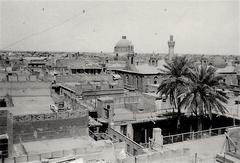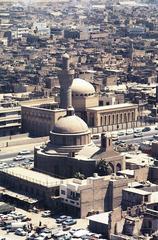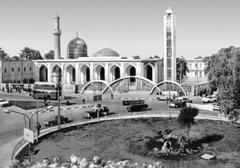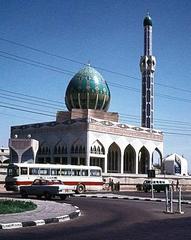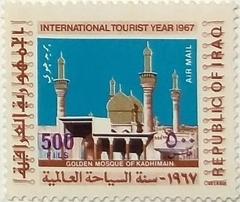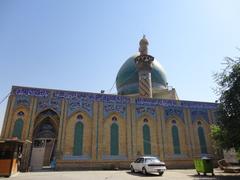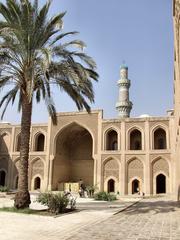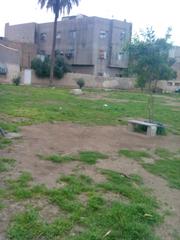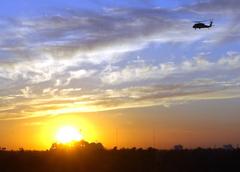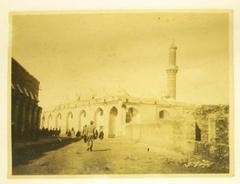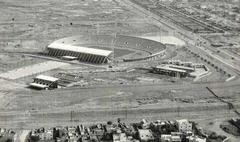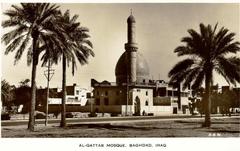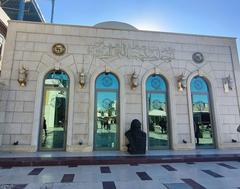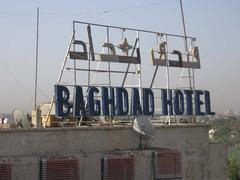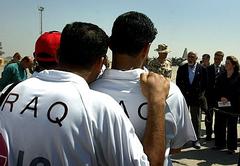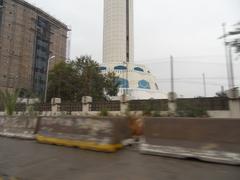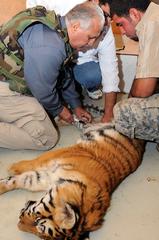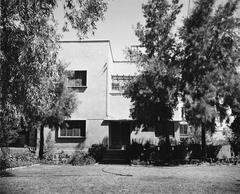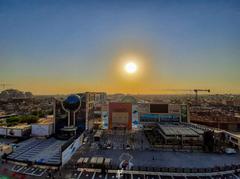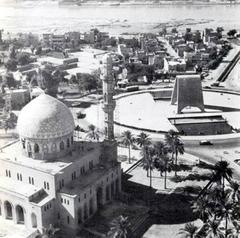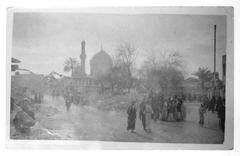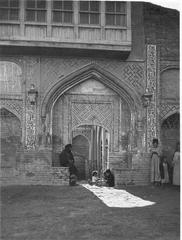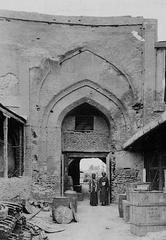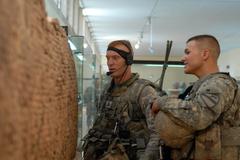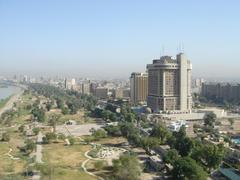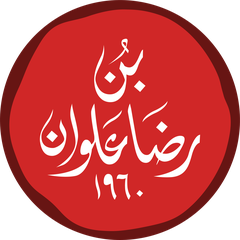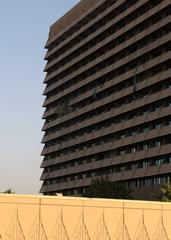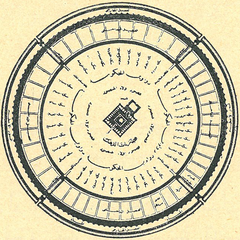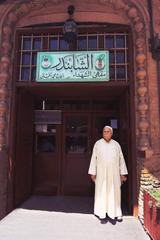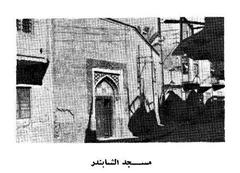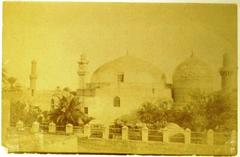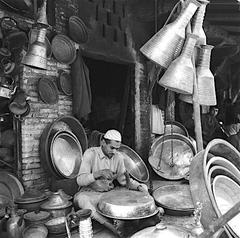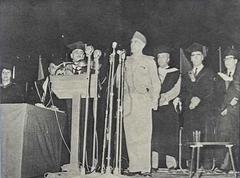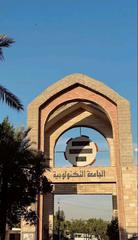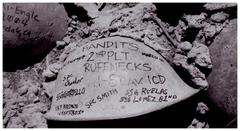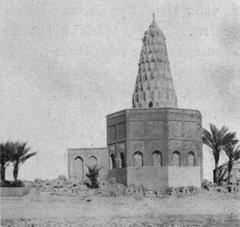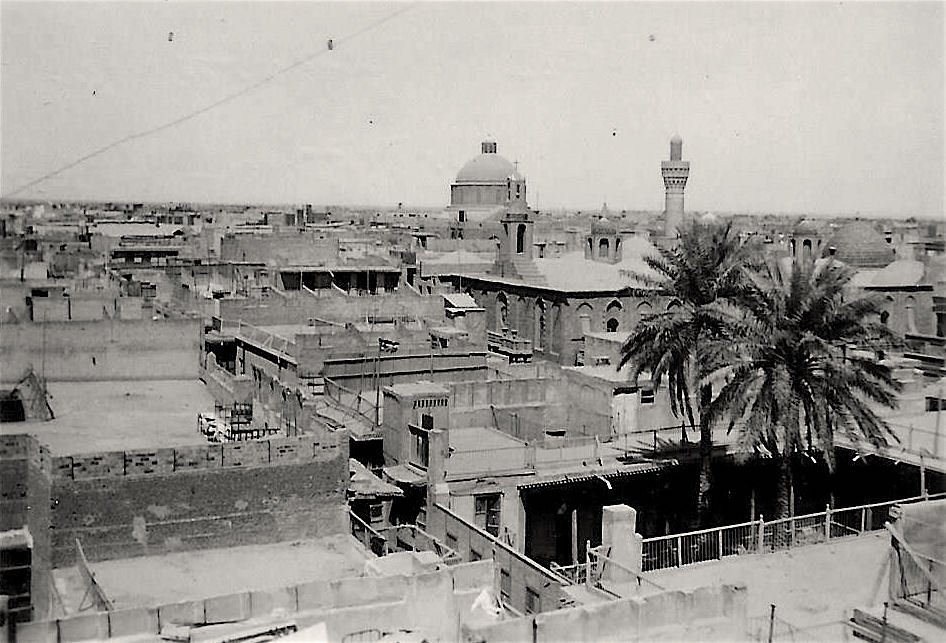
Al-Khulafa Mosque Visiting Hours, Tickets, and Guide to Baghdad Historical Sites
Date: 14/06/2025
Introduction
Nestled in the heart of Baghdad, the Al-Khulafa Mosque (Jami’ al-Khulafa) stands as a living testament to the city’s illustrious Abbasid past and enduring Islamic heritage. Commissioned in 902 CE during the reign of Caliph al-Muktafi, this mosque was originally part of the grand Qasr al-Khulafa palace complex, serving as both a private place of worship and, later, a vibrant communal Friday mosque (kulturenvanteri.com; Wikipedia). Its iconic minaret, with its distinctive cylindrical form and intricate muqarnas, remains a rare and important example of Abbasid architecture, representing both spiritual and architectural achievement in Baghdad’s Golden Age (hellotravel.com; UNESCO).
Over centuries, the mosque has witnessed Baghdad’s changing fortunes—surviving invasions, periods of neglect, and cycles of restoration under various rulers. Today, despite facing significant preservation challenges, Al-Khulafa Mosque remains a vital cultural and religious landmark, inviting travelers and history enthusiasts to engage with Iraq’s rich heritage. This comprehensive guide will illuminate the mosque’s historical significance, architectural features, current condition, and practical details such as visiting hours, tickets, and nearby attractions. For the latest updates, visitors are encouraged to consult resources like the Audiala app and official heritage platforms (archnet.org; kulturenvanteri.com).
Table of Contents
- Foundation and Abbasid Origins
- Architectural Features and the Iconic Minaret
- Historical Events and Transformations
- Modern Preservation and Challenges
- Visitor Information
- Cultural and Religious Significance
- Frequently Asked Questions (FAQ)
- Visual Gallery
- Related Articles
- Further Reading and Resources
- Conclusion and Call to Action
Foundation and Abbasid Origins
The Al-Khulafa Mosque, also known as Jami’u’l-Hulefa and Al-Ahdab, is the oldest surviving mosque in Baghdad. Its origins date to 902 CE under Caliph al-Muktafi, who commissioned the mosque as part of the expansive Qasr al-Khulafa palace complex (kulturenvanteri.com). Initially serving the caliph and his court, it was soon opened to the public as a central Friday mosque, becoming one of the three great mosques of east Baghdad during the Abbasid era.
Architectural Features and the Iconic Minaret
The mosque’s most notable architectural feature is its minaret—a masterpiece of Abbasid design. Standing approximately 34–35 meters high, it is supported by four layers of muqarnas and adorned with intricate brickwork and geometric motifs (kulturenvanteri.com). Its slightly leaning structure, which earned the mosque the moniker “al-Ahdab” (“the hunchback”), symbolizes both endurance and the passage of time. The minaret’s design bears similarities to other major Islamic structures, such as the Bastam minaret in Iran, highlighting the transregional influence of Abbasid architecture (UNESCO).
The prayer hall, with its rectangular hypostyle layout, mihrab, and modest decorative features, embodies the early Islamic architectural emphasis on function and spiritual focus.
Historical Events and Transformations
Medieval and Early Modern Periods
The mosque has been referenced by renowned travelers such as Ibn Battuta, who visited Baghdad in 1327 CE and noted its enduring minaret. Throughout the Ilkhanate and Mamluk periods, the mosque underwent renovations and expansions, including the establishment of a madrasa for intellectual pursuits (kulturenvanteri.com).
19th and 20th Centuries
By the 19th century, the mosque had suffered significant damage; British traveler James Silk Buckingham described its minaret as bearing “traces of violence.” Restoration in the 1960s under the Ministry of Awqaf, led by architect Mohamed Saleh Makiya, integrated modern elements while preserving the historical core (archnet.org). Despite these efforts, the mosque’s prominence declined as urban development and market activities overshadowed its presence.
Modern Preservation and Challenges
Structural Risks and Neglect
In recent decades, the mosque has faced neglect, political tensions, and insufficient maintenance. As of 2024, the structure is in a fragile state, with warnings of potential collapse if urgent restoration is not undertaken (Beyond the Bucket List). Local awareness of its history is limited, and official restoration efforts have been hampered by bureaucracy and security concerns.
Preservation Initiatives
Restoration agreements with organizations like UNESCO and assessments by British experts have been established, but comprehensive intervention remains pending (kulturenvanteri.com). The mosque is officially recognized as a heritage site, with advocacy for community engagement and international cooperation continuing (Archnet).
Visitor Information
Visiting Hours
- General opening: 8:00 AM – 6:00 PM daily.
- Hours may vary during religious holidays or special events; as of 2024, access may be restricted due to maintenance. Check local sources or contact the Sunni Endowment Office before visiting.
Tickets and Entry
- Entry is free. Donations for preservation are welcomed.
Accessibility
- The mosque is partially accessible; certain areas, particularly the historic minaret, are not suitable for those with mobility impairments.
Guided Tours
- Local guides and tour operators may offer in-depth historical tours. It is advisable to book in advance.
Travel Tips and Visitor Etiquette
- Dress modestly and remove shoes before entering the prayer hall.
- Photography is generally allowed outside; ask before photographing people or interiors.
- Visit early to avoid crowds and midday heat.
- Use local ride-hailing services or walk from nearby landmarks due to limited parking.
Nearby Attractions
- Souk al-Ghazali market
- National Museum of Iraq
- Abbasid Palace ruins
- Al-Rusafa Mosque
- Al-Wazeer Mosque
- Cathedral of Our Lady of Sorrows
Cultural and Religious Significance
The Al-Khulafa Mosque has historically served not only as a place of worship but as a center for scholarship, community gatherings, and civic life. Its enduring minaret and continued religious use make it a symbol of Baghdad’s resilience and rich pluralistic heritage (trek.zone; 100hala-iq.com).
Frequently Asked Questions (FAQ)
Q: What are the visiting hours?
A: Typically 8:00 AM – 6:00 PM daily, but hours may change during religious occasions or for maintenance. Verify locally before visiting.
Q: Is there an entry fee?
A: No, entry is free. Donations are appreciated.
Q: Are guided tours available?
A: Yes, through local operators or cultural organizations, especially during peak seasons.
Q: Is the mosque accessible to people with disabilities?
A: Accessibility is limited due to the historic layout.
Q: Can I take photographs?
A: Photography is allowed outside; ask for permission before photographing people or interiors.
Visual Gallery
- Image 1: The leaning minaret of Al-Khulafa Mosque, Baghdad (alt: “Al-Khulafa Mosque leaning minaret, Baghdad historical site”)
- Image 2: Interior courtyard of Al-Khulafa Mosque (alt: “Courtyard of Al-Khulafa Mosque, Baghdad Abbasid architecture”)
- Map: Location of Al-Khulafa Mosque in Baghdad, near Souk al-Ghazali
Related Articles
Further Reading and Resources
- UNESCO World Heritage Centre – Baghdad Historic Sites
- Aga Khan Documentation Center – Baghdad Collections, Archnet
- Iraq Ministry of Culture – Cultural Heritage Preservation
- Beyond the Bucket List: Iraq Travel Tips
Conclusion and Call to Action
The Al-Khulafa Mosque is a cornerstone of Baghdad’s historical and spiritual landscape, embodying centuries of resilience, creativity, and devotion. Visitors are encouraged to support preservation efforts through donations and by sharing their experiences. For the most current information about visiting hours, tickets, and restoration updates, download the Audiala app or consult local heritage authorities. By respecting and promoting the mosque’s legacy, we help safeguard Baghdad’s rich cultural heritage for generations to come.
References and Further Reading
- kulturenvanteri.com
- Wikipedia
- hellotravel.com
- archnet.org
- trek.zone
- Beyond the Bucket List
- 100hala-iq.com
- UNESCO
- Aga Khan Documentation Center, Archnet
- Shafaq News
